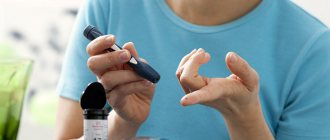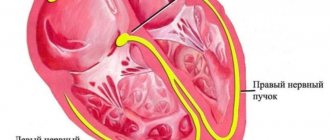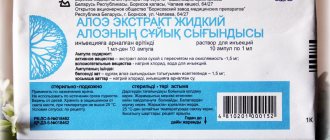It happens that a person suddenly discovers bloody discharge from the anus. Such an alarming symptom should never go unnoticed or ignored. After all, blood from the anus is a dangerous sign, indicating a possible serious illness.
Regardless of the amount of blood released during stool, you should immediately consult a doctor to find out the cause of this phenomenon. After all, blood during bowel movements is the body’s request for help.
You should not take such symptoms lightly, even if they suddenly stop.
In any case, contacting a specialist is necessary, since the disease could simply develop into a latent, chronic form.
The main reasons for bleeding from the anus
The root causes of hemorrhoidal bleeding are:
- hard consistency of stool;
- problems with stool;
- diarrhea.
Often, patients do not take emergency measures because they do not experience pain when bleeding occurs. But this behavior is a big mistake. Delay in this matter is inappropriate and destructive.
Bleeding from the anus during stool without pain can occur for various reasons. The shade of bloody discharge may vary depending on which part of the gastrointestinal tract the problem occurs in.
When blood loss occurs in the area of the rectum or sigmoid colon, a bright, red tint appears. In case of gastric or esophageal bleeding, the blood will be much darker.
When you eat fermented foods, the color of your blood discharge is also distorted. So, what are the main factors that contribute to a person bleeding from the anus?
The appearance of scarlet blood during bowel movements
Scarlet blood from the anus during defecation is usually found on toilet paper.
Bloody discharge comes out during bowel movements. The fact that the blood after defecation is bright scarlet indicates the development of pathology in the colon, or damage to tissue near the anus.
The patient experiences unpleasant, painful symptoms. This situation is typical for:
- Hemorrhoids . Bright red bleeding, in the form of drops, from the anus, mixed with feces, or blood clots. As a rule, it is not abundant (however, sometimes it manifests itself in the form of a blood stream). Occurs due to solid masses of feces and their large accumulation. It can also be triggered by excessive physical exertion on the body. If the situation is long-term, with hemorrhoids, not only inclusions of blood, but also pus are observed in the stool.
- Heavy bleeding with diverticula of the intestinal area: occurs with a certain frequency, in the postpartum period, as well as in older people.
- The appearance of cracks in the tissues of the rectum: very noticeable pain appears, quite a lot of blood is released.
- Scarlet blood during defecation without pain , caused by the presence of polyps. Bleeding occurs rarely and is accompanied by the presence of mucus in the feces.
Blood from diarrhea
When blood during bowel movements in women or men is accompanied by a phenomenon such as stool liquefaction, this is an extremely alarming symptom. In this case, such serious diseases as:
- salmonellosis infection;
- enteritis;
- internal hemorrhoids.
These diseases are characterized by the following manifestations:
- high body temperature;
- gagging;
- cutting nagging pain in the abdominal cavity;
- the appearance of chills;
- severe itching and burning in the anus.
Classification of bleeding according to blood color
Based on the shade of blood that is released from the anus, one can suspect the cause of the pathology:
- cherry - the colon is affected;
- red – indicates the formation of a tumor or polyp;
- scarlet - indicates a fissure, hemorrhoids or intestinal injury;
- dark clots - warn of a diverticulum or colon tumor;
- black (tarry) - indicate pathology of the stomach, duodenum, and initial parts of the intestine.
The color of bloody discharge is a valuable diagnostic sign.
What measures to take
When blood is detected during bowel movements in women without pain, the patient’s well-being can be characterized by:
- semi-fainting states;
- severe, debilitating weakness;
- feeling of discomfort.
The same conditions are typical for men.
Without wasting time, the patient should be examined by a proctologist as soon as possible.
If a pregnant woman experiences bloody discharge from the anus, she should visit an antenatal clinic to find out the possible causes.
If blood leaks out of a child’s stool, the baby should be taken to a pediatrician and tests scheduled as soon as possible. The specialist will determine which doctors to refer the little patient to and what to do.
Basic actions when bleeding from the anus is detected:
- Immobilize the patient so that he is at rest.
- In case of continuous bleeding, apply a cold bandage to the anus and swallow ice (drinking water is prohibited).
- Washing with cold water.
- Compress (cold) on the bleeding area (to constrict blood vessels and stop blood loss).
- The use of drugs that stop blood loss: Etamzilat;
- Vikasol.
First aid: how to help yourself before visiting the doctor
How to stop bleeding from hemorrhoids at home, what to do if it bursts? You can find yourself in such a situation without even expecting it. Therefore, it is necessary to know what to do in the current circumstances.
Cold
Cold is your main assistant for stopping bleeding, acting as an ambulance at home. Efficiency is associated with the ability to instantly reduce the permeability of vascular walls and narrow capillaries. If pain occurs, which rarely happens with hemorrhoids with blood, the cold blocks the sensitivity of the nerve receptors.
3 Ways to Use Cold for Hemorrhoidal Bleeding
- Ice compress . Helps well with external knots. Roll the bandage into 4-5 layers, soak in ice water, and apply to the perineum. You can take ready-made ice cubes from the freezer. It is good to have frozen herbal infusions of chamomile or oak bark. They will relieve inflammation and dry. Compresses and lotions are made while lying on your side. Action time: 3-5 minutes.
- Ice candles . Intended for use in the case of internal hemorrhoids. Pour herbal infusions or water into prepared cone-shaped forms made of thick paper, made yourself, and put them in the refrigerator until completely hardened. Before use, remove the paper, dip the candle in warm water and carefully insert it into the perineum for five seconds, no more. In the future, the time can be increased.
- Device “Krinus” . It is advisable to have at home if you suffer from hemorrhoids. It will replace cold compresses and ice suppositories; it works comfortably, excluding the effects of low temperatures on internal organs and skin.
Be careful.
Cold is contraindicated for those who suffer from pathologies of the bladder, kidneys and pancreas; it can provoke inflammatory processes. In this case, it is worth choosing another method of stopping the blood.
Hemostatic drugs
Used as emergency measures:
- Vikasol;
- Etamsylate;
- Dicynone.
Available in tablets and ampoules. If the bleeding is not too severe, it is better to stop on tablets.
Attention!
Under no circumstances should it be used for a long time without consulting a doctor. They have serious contraindications, side effects and administration features.
Hemostatic sponge
Sold in any pharmacy. The porous material of the sponge consists of collagen fibers impregnated with furatsilin and boric acid. Thickness from six to nine millimeters.
For hemorrhoidal cones, apply to the perineal area for 1-2 minutes. It becomes saturated with blood, enlarges, compresses the blood vessels and the blood stops. It has a healing and antiseptic effect, relieves inflammation.
If the nodes are internal, it is inserted into the rectal area, but very carefully. Subsequently, it dissolves there on its own, leaving no traces.
The listed measures should be used in emergency cases when bleeding began unexpectedly and lasted more than half an hour.
After this, professional help is required, a thorough diagnosis, identifying the cause and making a diagnosis.
Find out which doctor to contact if you suspect hemorrhoids >>>
Only a proctologist can advise how and with what to treat hemorrhoids in the future.
At the first appointment, the doctor performs an external examination and a digital rectal examination.
If necessary, prescribe instrumental diagnostic methods using an anoscope, sigmoidoscope, colonoscope. Based on the medical history and research results, he makes a diagnosis and prescribes treatment, including preventing blood loss in the future.
Effective medications for the first and second stages of hemorrhoids
Conservative treatment is represented by rectal suppositories, ointments, gels that can have an analgesic effect, increase muscle tone, dilute stool, and prevent injury to hemorrhoidal cones.
What effective suppositories for hemorrhoids with blood should be used first:
- with propolis;
- with adrenaline;
- with tannin;
- with sea buckthorn oil;
- with calendula;
- Relief-Ultra;
- Methyluracil;
- Hepatrombin.
Rectal suppositories are used mainly for internal hemorrhoids. They promote rapid healing, stop inflammation, and dry out. Usually applied twice a day.
It should be administered with extreme caution so as not to further injure the inflamed areas or cause re-bleeding.
Effective and cheap ointments are presented:
- Vishnevsky ointment;
- Proctosan;
- Troxevasin;
- Relief;
- Hepatrombin;
- Methyluracil.
Creams for hemorrhoidal bleeding:
- Proctonis;
- Boro Derm;
- Fitol-5;
- Prostoglivenol;
- Mastocrel gel.
To strengthen the vascular walls and eliminate stagnant processes, the doctor may prescribe the drug Detralex in tablets for oral administration for several months.
Microclysters
Promote regeneration and restoration of damaged tissues, their healing, reduce the risk of recurrent hemorrhoids with blood. Used in the formation of internal cones.
Enema contents: three most effective options:
- With hydrogen peroxide . Dissolve one teaspoon of the product in a glass of warm water. For one procedure, 50 ml of solution is enough. It is recommended to apply three times a day. This is especially true if blood loss is accompanied by painful and unpleasant sensations.
- With herbal infusions . Chamomile, calendula, blueberry, and yarrow flowers are suitable as medicinal raw materials. Relieve inflammation, heal, regenerate damaged tissues, have a bactericidal and astringent effect. Can be replaced with lotions and compresses when external nodes appear.
- With tannin . Substance concentration 1%. Mainly used for pain and itching. Creates an invisible protective film on the surface of the rectal vessels, reducing the pain threshold.
During conservative treatment, it is important to monitor personal hygiene, wash after each bowel movement, use antiseptics, solutions of medicinal herbs with tannins.
General therapy for hemorrhoids with blood involves, along with drug treatment, the use of physiotherapy, folk recipes, special nutrition and preventive measures.
Surgery
Recommended for frequent and severe hemorrhoidal bleeding, risk of anemia, lack of positive dynamics of conservative treatment.
Urgent surgery to excise hemorrhoidal cones is carried out mainly at the last, fourth stage of the disease.
In other cases, minimally invasive methods are used, presented by:
- sclerotherapy;
- ligation with latex rings;
- cryodestruction, freezing at low temperatures;
- laser removal.
After surgery, medications are prescribed:
- Detralex, Phlebodia, Troxevasin - to restore venous tone;
- iron-containing - to restore hemoglobin;
- improving the composition and properties of blood.
Bleeding may be false
The discharge of blood in feces may well be a false manifestation associated with the consumption of certain foods.
In this regard, you should not panic as soon as you notice changes in the color of your stool. You should remember what foods a person ate.
It is possible that changes in diet caused the stool to turn an unexpected color.
However, if after a few days the picture remains the same, you should sound the alarm - after all, an admixture of blood in the stool is always an unfavorable symptom.
Before visiting a specialist, self-diagnosis is recommended (which in no case replaces a medical examination).
Bleeding pattern and disease
- Regular heavy bleeding not associated with bowel movements - diverticulosis, polyposis, Crohn's disease, ulcerative colitis, rectal or colon cancer;
- Blood mixed with feces - cancer of the rectum and colon;
- Bleeding with diarrhea - dysbiosis, irritable bowel syndrome;
- Discharge of blood with mucus or pus - internal hemorrhoids, rectal prolapse or polyp;
- Severe bleeding with mucus - proctitis, colitis, rectal cancer.
Make an appointment
Self-diagnosis methods
Self-diagnosis will help shed light on the current situation. Of course, the patient will not be able to identify the root cause, however, such actions can help calm down and collect the necessary information about their condition.
In the future, when contacting a competent specialist, this will help for a correct diagnosis.
If a person discovers blood in his stool after a bowel movement, you need to pay attention to:
- amount and shade of blood;
- are there any clots or blood streaks?
- where exactly the blood collected (on the surface of the feces, or inside);
- whether there are drops of blood on underwear and on toilet paper.
Proctologist's research
Diagnostic studies by a proctologist will help to establish the root causes of the appearance of blood in the stool during defecation. The examination consists of several stages; after completing them, the patient is informed of the diagnosis and treatment for the disease is prescribed.
The most popular diagnostic methods are:
- examination of the rectum by palpation is not a very pleasant procedure, but extremely necessary for making a diagnosis;
- carrying out general tests: blood, urine, feces;
- collection of information by the doctor from the patient about the time of onset of the disease, its symptoms and duration of course;
- prescribing additional tests for a more in-depth study of the patient’s condition.
By and large, bloody discharge during bowel movements brings the patient a feeling of discomfort and pain, however, it does not pose a threat to his life. However, very serious situations leading to death are also possible.
The appearance of blood in the stool can be caused by, among other things, cancer and the growth of metastases. Therefore, in order to avoid negative consequences, you should not postpone your visit to a specialist. After all, as you know, it is better to prevent any disease than to carry out a course of lengthy and expensive therapy in the future.
Features of treatment
Discharge mixed with blood from the rectum is a symptom of various diseases, and therefore requires careful attention. With such a variety of causes provoking pathology, there can be no question of the existence of a single treatment regimen for all patients.
To eliminate bleeding, you need to treat the disease that caused it. Blood from the anus is not always a serious pathology, but in all cases without exception, this is a reason to visit a doctor.
Ways and methods of combating bleeding are correlated with the cause of the pathology:
- Medication – applicable for the treatment of infections, including helminthic infestations, when it is possible to accurately determine the pathogen and its sensitivity to prescribed antibacterial or antiviral therapy. Elimination of the cause entails the disappearance of the alarming symptom.
- Surgery is appropriate for polyps, malignant neoplasms, and advanced hemorrhoids.
- Cauterization or contact therapy is carried out if it is necessary (and possible) to cauterize the affected area of the mucosa in the upper or lower segment of the digestive system.
- Combined - greatly enhances the intended effect (for example, cauterization in combination with antibacterial therapy).
Prevention of bleeding from the rectum can only be a careful and reasonable attitude towards your own health. Medical examination is to help everyone who wants to maintain active longevity.
Rectal suppositories and treatment with their use
A very popular remedy for eliminating such problems are rectal suppositories.
This easy-to-use tool helps solve many problems:
- healing of damaged tissues;
- relief of the main symptoms;
- elimination of microcracks;
- relieving severe itching;
- elimination of pain syndrome;
- reducing the activity of proliferation of hemorrhoidal compactions.
The suppositories are inserted into the anus while lying on the back, after which the patient must roll over onto his stomach and remain in this position for at least half an hour.
The most effective in use, according to patient reviews, are suppositories such as:
- Aurobin;
- Anuzol;
- Anestezol;
- Relief.
If the patient is a pregnant woman, the attending physician will recommend the use of suppositories containing:
- papaverine;
- ichthyol;
- glycerol.
Features of symptoms in children
In children, rectal bleeding is accompanied by slight bleeding after bowel movements. If a total of about 45 ml of fluid leaks out, you may experience increased blood pressure and shortness of breath. Experts include the following main causes of bleeding:
- rupture of hemorrhoidal seals due to constant constipation;
- lactose deficiency;
- allergies to certain food additives and flavorings;
- intestinal obstruction due to frequent changes in infant formula or a sudden transition from breastfeeding to artificial feeding;
- dysbacteriosis caused by long-term use of antibiotics without microflora protection.
If bleeding does not stop within 10 minutes, hospitalization will be required.
Operating methods
If the problem is caused by hemorrhoids, there is an excellent option for removing hemorrhoids using laser therapy. This method, modern and painless, will help solve the problem accurately and for a long time.
This technique is recommended in advanced cases. It consists of cauterizing the vessels of the rectum to the patient using laser radiation, thus eliminating the cause of the bleeding.
Advantages of laser technique:
- there is no need for hospitalization;
- painlessness and speed of the procedure;
- the likelihood of relapses is minimized;
- short postoperative period.
Unfortunately, the laser treatment method is not yet very widespread in Russia, and many patients resort to a conservative method - surgical intervention.
Diagnostics
- Digital examination of the rectum. Already at the stage of preliminary examination of the perineum and anus, anal fissure and hemorrhoids can be diagnosed. Digital examination allows you to evaluate the mobility of the rectal wall and the condition of the lymph nodes.
- Anoscopy and sigmoidoscopy. Allows visual examination of the rectum and distal sigmoid colon. Using these methods, the presence of neoplasms of the mucous membrane, erosions, ulcers, cracks, and signs of inflammation is determined. These methods also allow tissue biopsy followed by coagulation of the bleeding area.
- Colonoscopy. The most informative method that allows you to examine the large intestine along its entire length. Thanks to its high resolution, colonoscopy can detect pathological changes in the intestines at the earliest stages, perform multiple tissue biopsies, remove polyps, and coagulate a bleeding vessel.
- Irrigoscopy. X-ray method for examining the large intestine. Using this method, it is impossible to determine the source of bleeding, but it allows one to obtain information about the underlying disease (diverticula, neoplasms) that likely caused the bleeding.
Be sure to read:
Candida mushrooms in the intestines: symptoms and treatment (nutrition, medications, folk remedies)
Treatment with traditional medicine
Many people wonder: how to get rid of hemorrhoidal bleeding at home? The initial stage of hemorrhoids is treated with traditional methods, so this approach is quite natural.
Healers achieve high efficiency in treating an unpleasant problem, practically guaranteeing a positive result from this approach. However, it is quite risky to use traditional methods without the supervision of a competent specialist.
It is better to use healers’ recipes as aids in professional therapy prescribed by a doctor.
The most popular folk methods are presented by the following recommendations:
- taking baths with a small amount of potassium permanganate solution for hemorrhoids;
- baths with the addition of infusion of chamomile and St. John's wort, mixed in a ratio of 1 to 1, in case of anal fissures;
- the use of microenemas with chamomile (30g of chamomile flower herb, brew with a glass of boiling water, cool, leave for 2 hours, insert into the anus using an Esmarch mug) for colitis, fissures, hemorrhoidal internal manifestations;
- if the patient has helminths, they are removed using a solution from onions: a chopped onion head is poured with warm boiled water overnight, filtered in the morning and the liquid is drunk on an empty stomach;
- you can get rid of tapeworm using the simplest available products - garlic and milk: you need to eat 10 heads of garlic and drink a glass of milk, and then, after 40 minutes, take a laxative (however, this method is not suitable for everyone);
- the use of tampons moistened with sea buckthorn oil (sea buckthorn is an effective anti-inflammatory and hemostatic agent) as lotions to the anus;
- to combat polyps in the intestines, use celandine: a decoction of the herb is used for enemas, and the infusion (1 to 4) is drunk 10-15 minutes before meals, in the morning;
- horseradish roots mixed with honey (1 to 1), take a teaspoon three times a day - also to eliminate polyps;
- orange peel boiled in boiling water will serve as an excellent remedy against bleeding: you can either eat the peel of the fruit or add sugar to the broth and drink in small portions, 3 times a day;
- A well-known hemostatic agent, nettle, will help stop severe bleeding: dry herb (30 g) should be brewed with boiling water (200 ml), cooled and taken three times a day, 1 tbsp. spoon, before eating.
Contacting the clinic
Only with specialized equipment is it possible to “seal” bleeding vessels using electric current. Other equally effective treatment methods include laser photocoagulation and “application”. The latter involves fixing films that stop bleeding and relieve pain. If the disease worsens, surgical intervention using blood substitutes will be required.
A sclerotherapy session in Moscow clinics costs from 5 to 10 thousand rubles. Consultation with a phlebologist with an initial examination – 4.5–7 thousand rubles. Excision of hemorrhoidal seals with a regular scalpel costs 12 thousand rubles, and with the help of ultrasound it is 1.5 times more expensive.
Nutrition for bleeding during bowel movements
If a person experiences the above symptoms, serious changes should be made to their diet:
- observe drinking regime;
- consume fermented milk products;
- increase the amount of cereals in the diet;
- give preference to black bread.
If constipation occurs, eat foods with a mild laxative effect:
- salads with beets;
- use pumpkin seeds in recipes;
- carrot salads;
- prunes and dried fruit compotes.
Nutritional features: diet for hemorrhoids with blood
At the first signs of bleeding hemorrhoids, you should adhere to certain dietary rules and temporarily go on a diet to help thin the stool. The nodes will not be so injured and will heal faster.
On the first day, it is advisable to consume only liquids or broths.
Avoid foods that cause vasodilation, increased blood flow to the pelvic organs, fermentation, flatulence, gas formation:
- alcohol-containing drinks, coffee, kvass, strong chas;
- spices, marinades;
- smoked products;
- sauces and seasonings;
- baked goods, desserts and sweet fruits;
- vegetables with plant fibers - cabbage, radishes and radishes, corn;
- pasta;
- rice;
- potato.
The daily menu includes four dishes.
- From fish and lean meat.
- Broths made from them.
- Bran bread.
- Cereals.
Added to them:
- vegetable and fruit dishes;
- dried fruits;
- fermented milk products.
From drinks:
- plain water, mineral still;
- natural juices;
- decoctions of medicinal herbs;
- green tea;
- compotes.
Basic diet rules
- Fractional meals . In small portions, 5-6 doses per day with an interval of 3 hours. Avoid overeating.
- Drinking fluids . Two liters of any drinks and water per day will help avoid constipation and hardening of stool.
- Vegetable oil . You should take two teaspoons several times a day.
- Kefir for the night . Or a glass of any fermented milk product.
Such a dietary restriction will help restore the functioning of the stomach and intestines, normalize nutritional processes, eliminate constipation and permanent injuries to hemorrhoids.











